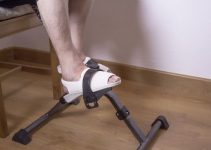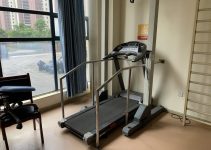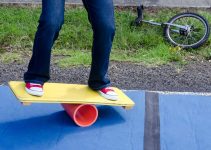Adopting regular yoga practice has a surprising range of benefits for seniors, from increasing flexibility and strength to reducing anxiety and sharpening the mind. Find out more benefits and how to get started here.
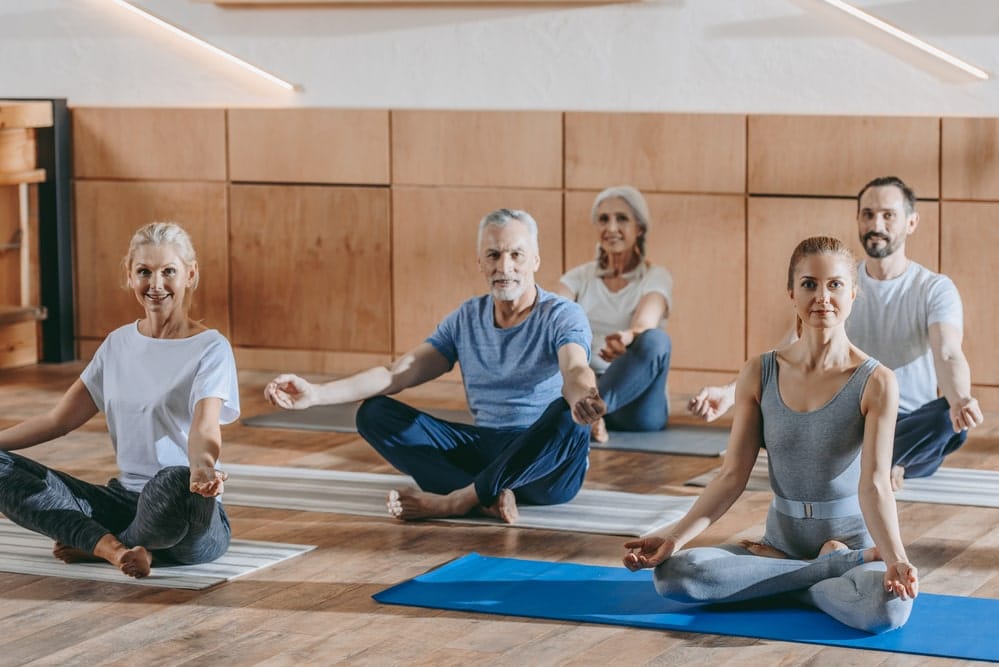
With over 36 million people practicing yoga in the USA alone, the benefits of this activity are widely known. But perhaps less appreciated are the significant reasons for older adults to take up yoga, even if they have no previous habit of regular exercise.
What are the benefits? What is involved? And how can a senior get started? We prepared a short guide of yoga for seniors that hopefully will see you on a yoga mat soon.
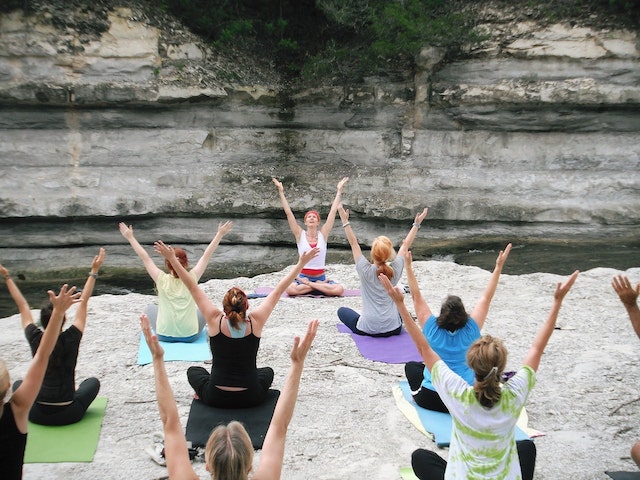
Health Challenges for Seniors
For most seniors considering taking up yoga, their personal health challenges will be a concern, if not their motivation. Chronic ailments like arthritis, hypertension, cancer, or heart disease are an issue for many. Beyond that, over 50 percent of seniors over 65 have a physical disability.
Many health problems are associated with the sedentary lifestyle of many older people. Some of these include:
- Limited joint flexibility.
- Arthritis/bursitis.
- Osteoporosis.
- Lower back pain.
- Chronic pain.
- Increased blood pressure.
- Inadequate blood circulation.
- More body fat and less lean body tissue.
- Respiratory difficulties.
- Sleep problems.
Thankfully, yoga promises some relief.
The Three Key Elements of Yoga
Ask anyone who has practiced yoga seriously and you’ll hear that this exercise is more than just a form of stretching. Yoga is often described as the union of mind, body, and spirit. Even the more fitness-oriented types of yoga popular in Western countries emphasize holistic benefits that go beyond toning muscles and flexing tendons.
There are three elements key to yoga:
- Focus: In a world full of distractions, yoga re-centers the mind, restores balance, and releases accumulated stresses.
- Mindful breathing: Giving full attention to exhaling and inhaling will steady your heart rate, improving focus and concentration. Breathing deeply opens the rib cage and inflates the lungs fully to increase oxygen intake.
- Asana/pose: The ancient Sanskrit word “asana” literally means pose or posture. The aim of adopting a particular pose is to have all parts of the body mindfully arranged in perfect balance. In this way, there is no unnecessary stress acting on any joint, muscle, or bone.
For elderly people, yoga offers a reprieve from chronic ailments and loss of mobility. How can yoga practice achieve that?
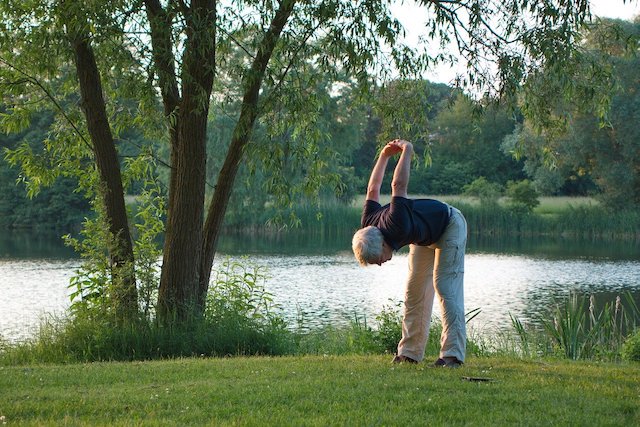
7 Reasons to Start Practicing Yoga
Adopting regular yoga practice has a surprising range of benefits for seniors.
1. Yoga Increases Flexibility and Protects Joints for Seniors
As age advances, the body gets stiffer and less flexible. Yoga works on releasing joints, making muscles more supple, and stretching tendons. Regular exercise will soon make everyday movements easier, such as doing up your laces or lifting your arms.
Past your 50s, joints lose some of their flex and fluidity. Regular exercise now becomes valuable protection against debilitating ailments like arthritis and carpal tunnel syndrome.
Yoga not only improves flexibility through the mechanical exercise of limbs and torso but by bringing awareness to your movements and body position. Mindful stretching adds purpose and control as you extend your body fully with a sense of balance.
Each asana — or yoga position — builds muscle memory to let you achieve the bends and reaches with a sense of confidence. And so, the flexibility you gain means everyday movements will not unduly increase the wear and tear of your joints and tendons.
2. Yoga for Seniors Builds Muscle and Bone Strength
Without using weights, yoga will strengthen your muscles and reduce effort needed for daily activities. A regular practice routine builds muscles, especially in your legs and torso, your hips and abdominals, as well as your shoulders, neck, and spine.
For example, a 2001 study showed that yoga significantly improved hand grip strength in arthritis sufferers.
Osteoporosis and low bone density also inflict people past the age of 50. Again, yoga asanas that use bodyweight to create gentle strain are known to maintain bone strength.
3. Yoga Improves Balance for Seniors
With improved flexibility, mobility, and strength comes better balance. The slow and mindful movements of yoga asanas will improve your control of alignment and movement.
Yoga improves muscle coordination and your sense of position in space. The asanas emphasize balance to build strength and confidence. This becomes increasingly important as you grow older and spend less time physically active.
Reducing the risk of falls is a popular reason for taking up yoga. Falls are perhaps the most common cause of injury for seniors. With yoga, you will develop a stronger sense of balance to avoid bad falls, letting you maintain good mobility into advanced age.
4. Yoga for Seniors Minimizes Hypertension
Reducing blood pressure and hypertension is another great benefit of taking up regular yoga practice. The balanced postures, focused meditation, and controlled breathing help manage blood pressure levels.
Just an hour of yoga every day can be expected to reduce blood pressure to below risk levels, along with a reduction in cholesterol, blood sugar, and triglycerides. If you already have these health issues, discuss with your doctor how doing yoga could help alleviate that.
Just by reducing stress, yoga can counter the causes of hypertension. By relaxing tension in your torso and upper back, your body will feel more relaxed, lowering your heart rate, improving your breathing, and also reducing blood pressure.
5. Yoga for Seniors Loses Weight
If you want to control your body weight, good nutrition is important; but good digestion also requires a healthy metabolism. You don’t need intense cardio-vascular exercise to fire up your digestive system. Just half an hour of yoga per week can be enough to control weight gain from a sedentary lifestyle.
Interestingly, it’s not just the physical activation of your body that brings these health benefits but also the focus and mindfulness that yoga practice helps bring to your life in general. You’ll find that healthy living entails a healthy mind that raises appetite, brings a spring to your step, and avoids instant gratification.
6. Yoga for Seniors Reduces Anxiety and Boosts Mood
A healthy mind is a happy mind. The breathing, movement, and meditation of yoga practice cultivates a state of well-being, reducing the risk of depression. Yoga is known to be a mood-booster, especially since most do the exercises socially, together with others in guided classes.
One reason yoga is so much more effective than any other sport to induce positive moods is that relaxation is an integral part of the daily routine. In the relaxed state, you’re suspended midway between awareness and sleep, which helps naturally regulate how the body responds to physical and emotional stresses.
Anxiety arises when heartbeat increases, muscles grow tense, and you perspire. Yoga counters that by consciously reducing your heart rate, bringing down blood pressure, and relaxing your breathing.
7. Yoga for Seniors Sharpens Your Mind
Age brings the wisdom to admit that our mental abilities also decline. So you’ll be pleased to know that practicing yoga relaxation techniques for 30 minutes showed immediate benefits for people with multiple sclerosis. Breathing focus and synchronized movements help keep the mind clear and engaged.
Meditation is part of yoga. Mindfulness is just pausing and reflecting in the present moment. For the elderly, it helps create a feeling of connectedness and a sense of empowerment. Regular meditation practice improves sleep, reduces signs of depression, and improves the way we breathe, along with giving many more benefits.
In fact, medical practitioners will advise yoga as a mind-body therapy to enhance mood, sleep, cognition, and general well-being in seniors. It’s believed that mindful movement like yoga can be better than traditional exercise to improve quality of life, mood, and mental functioning.
Even More Reasons to Start Yoga
The long history of yoga and intense interest by scientists in recent times has revealed so many more benefits of this practice.
Improved Sleep
Seniors find yoga very relaxing, especially after the body has been exercised. So it’s not surprising that older adults appreciate being able to sleep longer and more soundly.
Aches and Pains
Older people frequently suffer from chronic aches and pains, which yoga can alleviate, especially for those afflicted by osteoarthritis. Yoga teaches how breathing and deliberate relaxation can address chronic pain and reduce dependence on pain medication.
Breathing Difficulties
Difficulties with breathing among elderly people are not uncommon. In an extensive study, breathing difficulties in bronchial asthmatics were successfully treated with a 30-minute yoga-chair breathing procedure involving simple neck muscle movements and postures to relax neck muscles together with breathing exercises.
The participants acquired confidence in the use of this breathing technique and afterward reported that they used it frequently before needing to take their prescription medication. As a consequence, diminished anxiety helped relieve the episodes of breathing difficulty.
Diabetes
Yoga can be a simple and economical therapy. Just 40 minutes of yoga per day can achieve better blood sugar control and more effective breathing.
Digestion
Any moderate physical exercise does wonders for your regular digestion. Indigestion, constipation, and irritable bowel syndrome can all be targeted with selected yoga asanas.
Sciatic Pain
It’s not uncommon for seniors to find their sciatic nerve to get pinched. Yoga can provide quick relief with some practiced poses, such as the Seated Spinal Twist.
Cancer
Even for this feared disease, yoga is recognized as effective complementary symptom management. Research has shown that yoga has a positive impact on physical stress, inflammation, and immune function for patients battling cancer.
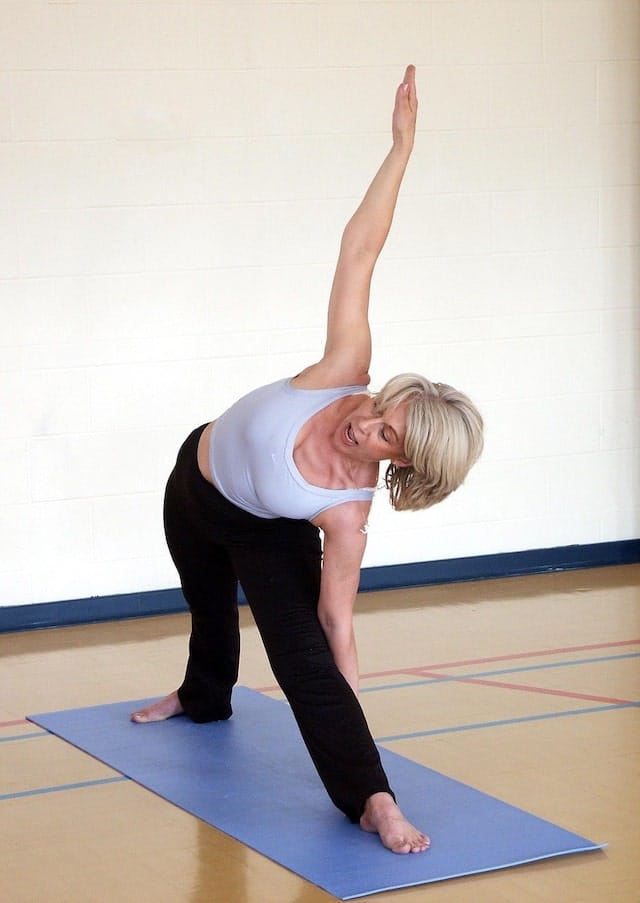
How to Get Started
It’s all very well to decide to take up yoga but then face the question of where to start. If friends or opportunities do not lead you to a local yoga teacher, then you have to decide where and how to get started yourself.
If you want to join a school, then you will need to know what are suitable yoga classes for seniors. Since you may see different styles of yoga advertised, here’s a quick guide to the more common forms.
Hatha: Not so much a style but merely a term describing any form of yoga that involves physical postures, also called asanas. Typically, these are classes with a series of exercises focusing on stretching and breathing with time for mindfulness and focused relaxation before and after. Hatha is a well-suited yoga for elderly beginners.
Iyengar: A popular form of Hatha yoga, this style uses many extra props like straps, locks, and bolsters to help achieve the right position without discomfort. Elderly people getting started with yoga enjoy this style.
Vinyasa: A number of yoga styles that share attention to breathing practice with short movement sequences are described as Vinyasa. The fluid and quick style is sometimes compared to dancing, so you want to be relatively fit to take this up.
Ashtanga: This is a challenging and fast-paced form of yoga that’s not recommended for older adults. However, if you need to lose weight and are fit enough for intense aerobic activity, this may be for you.
Kundalini: This “yoga of awareness” is less known but quite popular with seniors because of the holistic combination of physical and spiritual elements that combine asanas, breathing, and meditation with rhythmic chanting.
Chair yoga: Certainly not a yoga school on its own, we still wanted to include reference to this practice as it suits older people very much. Using a chair as an aid for stability, as Iyengar does, gives confidence to elderly people trying to regain better stability.
Doing Yoga at Home
If there’s no suitable class available for you to join, then you may find working out following video guidance worthwhile. We selected some DVD sets we can recommend with classes of gentle yoga for seniors.
Yoga over 50 contains routines that can be adapted to suit different needs for strength building, flexibility, and mindfulness. With calm explanations, the trainer goes at a pace that over 50s can easily keep up with.
Gentle Yoga: 7 Beginning Yoga Practices for Mid-life is aimed at 40 to 70-year-olds. Three sequences are introduced with one each for your morning and evening practice. A mid-day relief session to ease aches for sedentary workers is the third. The DVD includes targeted flexibility practice for improved balance, strengthened core, and standing poses to work hips and legs. It was filmed outdoors in the inspiring Glacier National Park.
Yoga for Seniors is aimed at the needs of over 70s with all level one exercises done just sitting on a chair. Using gentle movements, the three-level program improves your balance and strength in your legs, ankles, and feet. This training helps build muscles for everyday life and to avoid falls.
Yoga Boost is not necessarily yoga for seniors, but with its gentle approach, it’s well suited to the elderly. With easy exercises that can become part of everyday routines, you can work on energy flow, muscle building, weight loss, pain reduction, and de-stressing.
Relax Into Yoga for Seniors is based on a Yoga for Seniors training program run at the Kripalu Center for Yoga and Health and Duke Integrative Medicine. Drawing both on traditional yoga practice and insights from modern medicine, the DVD contains exercises for different levels of mobility: lying in bed, sitting on a chair, prone on the ground, and upright.
Yoga for Beginners Deluxe 6 DVD Set is a highly rated product with a selection of programs for beginners with different needs. Customized routines for beginners, stress relief, weight loss, strength, and flexibility workouts are provided with one whole DVD just for ‘inflexible’ people.
Prefer to read about yoga for seniors instead? Relax into Yoga for Seniors is a six-week course aimed at building strength, improving balance, increasing flexibility, and providing pain relief.
Doing It the Right Way
Now, before you launch into doing yoga at home without the guidance of a certified trainer, keep in mind some precautions, especially if your body is not so young anymore.
- Carefully study the sequence of movements to reach each position to encourage slow and deliberate transitions.
- Only hold the position as long as is comfortable for you. Recorded exercises may be aimed at younger, stronger participants that you don’t need to compare yourself to. You can always repeat the pose again.
- Focus your gaze at a specific spot for balance — ideally straight ahead or at the ground for best reference.
- You don’t need to strictly follow all poses if you find some harder than others. Either skip the more difficult asanas or choose another similar one.
- Don’t hesitate to use any props, such as a chair, cushion, or block you think may help you.
- Choose poses that stretch and strengthen areas that feel tight or weak for you. Give special attention to ankles, hips, lower back, and hamstrings. And protect your wrists as these are typically weaker for older people.
- Choose easier poses and challenge yourself just with one or two harder ones — not the other way around.
- Drink plenty of fluids.
- Talk to your doctor if you have any health concerns or before starting a challenging physical activity program.
Rejuvenate With Yoga
There’s no doubt that if you regularly dedicate time to yoga, no matter what your age and level of fitness, your body will thank you very soon. The extensive list of benefits shows that there are many more good reasons to take up yoga than just improving flexibility. Yoga can make a critical difference to your quality of life as you age.
And be sure, it’s never too late to start by joining a yoga school or even in the privacy of your own home by following a training program on DVD.
Do you have any experience with yoga that you can share below?

